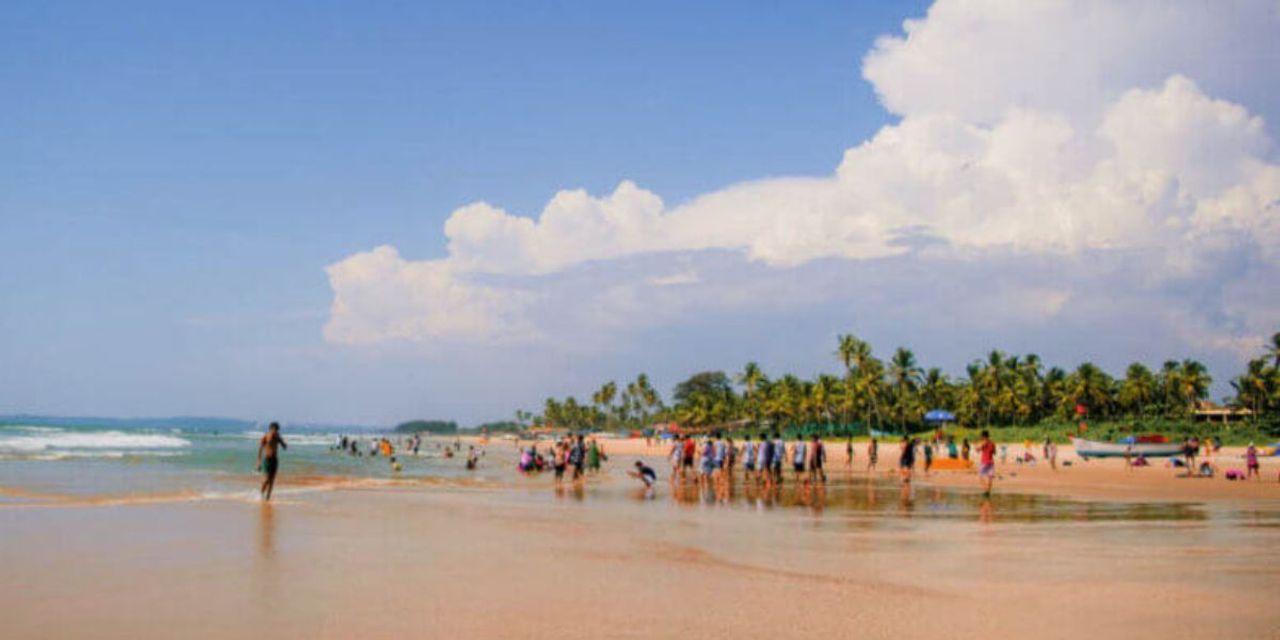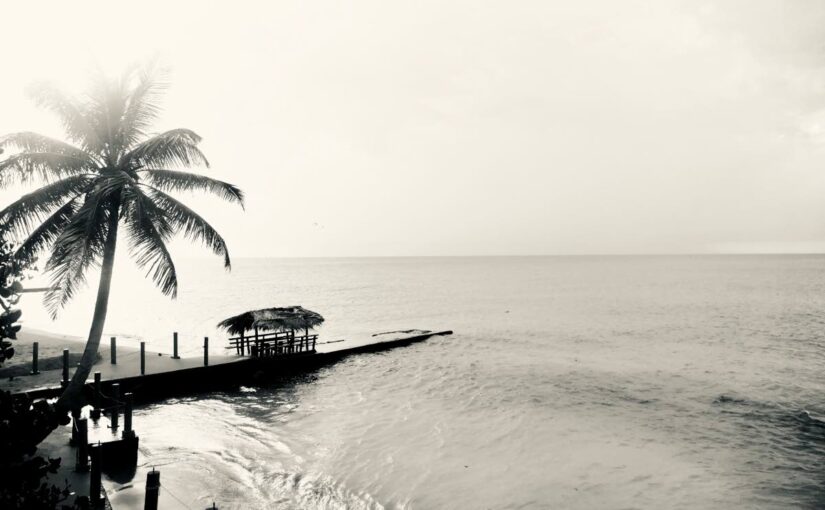Goa, known as India’s 'beach paradise' for its clean shores and popular tourist spots, usually sees a surge in visitors from October to December....
Vous n'êtes pas connecté
- English
- Français
- عربي
- Español
- Deutsch
- Português
- русский язык
- Català
- Italiano
- Nederlands, Vlaams
- Norsk
- فارسی
- বাংলা
- اردو
- Azərbaycan dili
- Bahasa Indonesia
- Հայերեն
- Ελληνικά
- Bosanski jezik
- українська мова
- Íslenska
- Türkmen, Түркмен
- Türkçe
- Shqip
- Eesti keel
- magyar
- Қазақ тілі
- Kalaallisut ; kalaallit oqaasii
- Lietuvių kalba
- Latviešu valoda
- македонски јазик
- Монгол
- Bahasa Melayu ; بهاس ملايو
- ဗမာစာ
- Slovenščina
- тоҷикӣ ; toğikī ; تاجیکی
- ไทย
- O'zbek ; Ўзбек ; أۇزبېك
- Tiếng Việt
- ភាសាខ្មែរ
- རྫོང་ཁ
- Soomaaliga ; af Soomaali
Rubriques :
 Maroc - EURASIAREVIEW.COM - A la une - 17/Sep 15:56
Maroc - EURASIAREVIEW.COM - A la une - 17/Sep 15:56
Beyond Irritation: Bali’s Tourism Scourge – OpEd
Like eager lice on a ripe scalp, tourists have become a much-reviled feature of various economies. While cash and contributions come in their wake, such an industry depletes, drains and pollutes the very site it idealises. International tourism does its bit to bloat global greenhouse gas emissions, with transportation constituting the lion’s share. All this has engendered yet another addition to the uninspiring jargon of tourism research: overtourism. Overtourism can be seen as the apotheosis of the Irridex Index (irritation index), an unremarkable idea formulated by George Doxey in 1975 to describe the way attitudes in a local community evolve to tourism and tourists as numbers increase. It proposes four stages: euphoria, apathy, annoyance and antagonism. The year has been busy for the antagonists. In Venice, a daily €5 charge was introduced as part of a trial for 29 peak days concluding on July 14, causing its fair share of confusion, even anger to freedom of movement advocates. Earlier that month, Barcelona residents protested against tourists luxuriating on restaurant terraces, squirting them with water to the chants of “Tourists go home!” As far back as 2017, the Catalan capital featured such agitated themes as: “Your luxury trip is my daily misery.” Of late, tourists to Bali, so longed for during the pandemic, have become a lamented scourge. There are both boon and bane, blessing and curse, but the number of tourists flocking and mobbing the Indonesian island has officials worried. In 2023, 5,273,258 foreign visitors made Bali their destination, with 439,438 visitors arriving per month. At the height of the COVID pandemic, pundits and policy makers began wondering whether the more detrimental effects of international tourism might be addressed by adopting more sustainable models. Those airy propositions proved short lived before the returns of convenience. That Bali has been the subject of use, misuse and traditional exploitation is much in keeping with its imperial colonial history. Cornelius de Houtman called the island Jonck Hollandt (New Holland) on his arrival in 1597, an approach that set matters in predictable train. Bali was to be a place of profound pleasure, flesh and hedonism, its natives treated as servitors and providers. With the departure of the Dutch, Bali faced another set of rulers in its post-colonial existence. In 1965, the season for hunting communists throbbed with venal opportunity. Suharto, then Commander of the Indonesian Army Strategic Reserve, relished the abduction and murder of six senior army generals by the 30 September Movement, calling it a coup attempt by the Indonesia Communist Party (PKI). One Western source present in Bali at the time, John Hughes, noted a perverse contrast between haunting luxury hotels and charred villages that were a contemporary reminder of vengeful slaughter. “For their Communist affiliations the menfolk were killed. The women and children fared far better; they were driven screaming away. The village itself was put to the torch.” An orgy of killings and burnings followed, with the night sky red as communists “were hunted down and killed.” The destruction of the PKI, with the blessings of the US government, saw opportunities for the new military regime to exploit Bali. Here was a chance to play pimp to the West, an opportunity to mould Bali into a Batista-styled Cuba. As the anthropologist J. S. Lansing puts it in his 1995 study, the World Bank formed ties with the Indonesian regime to boost the tourism industry, inviting non-Balinese international hotel chains onto the island, leaving the locals to take up positions in the service industry. The process resulted in a cleansing of political fervour, assuring an even-tempered, unthreatening docility to tourism. In its modern form, Bali’s tourism industry has become a plague of monumental proportion. A group calling itself Responsible Travel is not shy in calling the Indonesian island “one of the world’s most high-profile victims of mass tourism.” It goes on to note that tourists have been “culturally insensitive”, that the island’s “rice terraces are disappearing beneath hotels, resorts, and villas”. During the July-August period “you can easily spend a big chunk of your holiday stuck in traffic.” The issue of cultural sensitivity has become a source of lasting aggravation. Tourists have been accused of insulting locals, fomenting altercations and disturbing the peace. On June 9, the Bali Mandara Toll Road and I Gusti Ngurah Rai International Airport witnessed what was reported as a “rampage” by a “foreign man” in charge of a stolen truck. The General Manager of the airport, Handy Heryudhitiawan, told the press that “a foreigner broke into I Gusti Ngurah Rai Airport, Sunday (9/6) at 22.00 WITA using a truck and hit the tollgate barrier and other facilities.” Modest measures have been imposed to address the maladies of overtourism. In February, a Bali Tourism Tax Levy of 150,000 rupiah ($15) was introduced for tourists arriving on the island, originally intended to finance cultural conservation and important infrastructure. One example is a railway proposal connecting Bali’s airport with Seminyak and Nusa Dua would ease congestion in the city proper. The authorities have been less than forthcoming about any projects, while a majority of eligible arrivals – upwards of 60% - have been avoiding the levy. The acting governor of Bali, Sang Made Mahendra Jaya, has proposed a review of the existing laws and sanctions for those seeking to evade the fee. None of this addresses the issue of numbers. Tourism minister Sandiaga Uno warned in August that an increase of 10% of existing tourists in South Bali would push it into the realm of overtourism. “We must avoid a situation like Barcelona, where tourists become public enemies.” This month, Hermin Esti, a senior figure in the Coordinating Ministry of Maritime and Investment Affairs, revealed government plans to place a moratorium on the construction of new motels, villas and nightclubs. The duration of such a moratorium is vague, though the minister running that department, Luhut Pandjaitan, suggests it may last a decade. As with such solutions minted in the department of peripheral visionaries, these are unlikely to arrest the resentment that has begun to bite. Tourists to Bali are destined to become public enemies.
Articles similaires
Costa Rica Gentrification and Large-Scale Tourism
In many ways, Costa Rica is a victim of its own success. Its beautiful beaches, abundant wildlife, and stable democracy have made it an attractive...
Going beyond
Every place in the world is "a destination" that someone might want to visit for one reason or another. Usually, locals do not view their space in...
Indonesia’s Gutsy Response To Chinese Incursion Shows Ex-General Prabowo’s Assertiveness – Analysis
By Tria Dianti Jakarta’s feisty response last week to the Chinese coast guard “disrupting” Indonesian survey activities in the North Natuna...
How Effective Is The Latest China-India Border Patrol Agreement? – Analysis
By Zhou Chao Indian media has recently reported that the Indian Ministry of External Affairs stated that China and India have reached an agreement...
The seriousness of art and its working: An artistic experience
DAVID BOOTHMAN I HAD become a delinquent until I had been saved, relieved from my self-reprimanding for my transgressions. Back in the day in high...
NTA leader: Alliance talks ongoing for general election
NATIONAL Transformation Alliance (NTA) political leader Gary Griffith says talks between the National Transformation Alliance, Congress of the People...
Mali And Algeria Feud Over How To Handle Tuareg Rebellion
Tensions between Algeria and Mali are growing over how to resolve Mali’s ongoing Tuareg rebellion, which has continued for more than a...
Senator Hislop: Take Tobago autonomy ‘step by step’
GOVERNMENT senator Laurence Hislop has said the best path towards greater autonomy in Tobago is a "step-by-step" approach. Hislop was speaking in an...
Diplomatic Fallout: The Implications Of India-Canada Relations – OpEd
In recent weeks, the diplomatic landscape between India and Canada has been sharply defined by accusations and counterclaims, shedding light on the...
Les derniers communiqués
-
Adobe Brings Conversational AI to Trillions of PDFs with the New AI Assistant in Reader and Acrobat
Adobe - 21/02/2024
-
Laura Frigenti takes the Helm as Chief Executive Officer of the Global Partnership for Education
Global Partnership for Education - 05/12/2022




